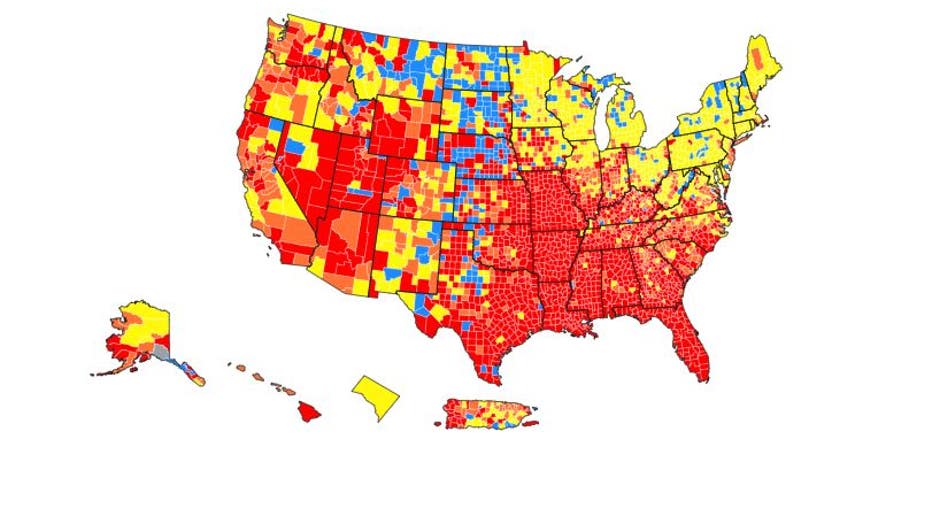COVID-19 delta variant surge: How to tell if you’re in high-risk area

The US Centers for Disease Control and Prevention updated its mask guidance on Tuesday to recommend that people who are fully vaccinated against COVID-19 resume wearing masks indoors in parts of the country with high levels of the virus. The public health agency also advised everyone in K-12 schools to wear masks regardless of vaccination status.
On Tuesday, the U.S. Centers for Disease Control and Prevention updated its guidance to recommend that fully vaccinated people again wear face masks indoors if they are in an area where the novel coronavirus is surging.
The highly transmissible delta variant and millions of unvaccinated Americans are fueling the surge, the CDC said. The country is averaging more than 57,000 new cases a day and 24,000 COVID-19 hospitalizations.
To maximize protection from the delta variant and prevent possibly spreading it to others, the CDC recommends that those who are vaccinated wear a mask indoors in public in areas with high or substantial transmission rates.
The CDC provides on its website, by county, the areas that are considered to have high or substantial transmission.

A screenshot of the CDC’s reported level of community transmission from July 19, 2021 - July 25, 2021. COVID.CDC.gov
Right now, the majority of counties in the U.S. have high transmission rates, with several southern states in the red. Nearly every county in Missouri, Arkansas, Louisiana, Mississippi, Alabama and Florida are seeing high transmission rates, according to CDC data.
Most northeastern states, according to the CDC, are seeing mostly moderate transmission rates, such as Minnesota, Wisconsin, Michigan, Ohio, Pennsylvania, New York, Maryland, Connecticut, Rhode Island, Massachusetts and Maine.
Only a few dozen counties across the country have low transmission rates, the CDC’s data indicates.
The data displayed from the CDC as the agency’s mask recommendation was updated came from the week of July 19, 2021 - July 25, 2021.
RELATED: CDC: New data suggests vaccinated people could transmit delta variant
CDC Director Dr. Rochelle Walensky cited new information Tuesday during the CDC’s press briefing about the ability of the delta variant to spread via those who have been vaccinated as the reason for the agency’s change in guidelines.
She said new data shows that vaccinated and unvaccinated people infected by the delta variant carry viral loads that "are actually quite similar."
"Unlike the alpha variant that we had back in May, where we didn’t believe that if you were vaccinated you could transmit further - this is different now with the delta variant. And we’re seeing that now, infection is possible if you (have been vaccinated and) are a rare breakthrough infection, that you can transmit further, which is the reason for the change," she said.
RELATED: COVID-19 breakthrough cases: What are they?
Walensky reiterated several times that the "vast majority" of transmission happening in the country right now is occurring through and among unvaccinated individuals.
Additionally, people who weren't vaccinated make up nearly all hospitalizations and deaths from COVID-19, Walensky said.
Walensky noted that vaccinated people are still unlikely to become severely ill from COVID-19 if a breakthrough case does occur.
In studies, the two-dose COVID-19 vaccines by Pfizer and Moderna were around 95% effective at preventing symptomatic illness, while the one-shot Johnson & Johnson shot was 72% effective, though direct comparisons are difficult.
Experts believe the delta variant spreads more easily because of mutations that make it better at latching onto cells in human bodies. On its website, the CDC notes "increased transmissibility" with the delta variant and the potential for it to make certain monoclonal antibody treatments less effective.
More than 163 million people, or 49% of the total U.S. population, are fully vaccinated, according to CDC data. Of those eligible for the vaccine, aged 12 and over, the figure rises to 57%.
This story was reported from Detroit. The Associated Press contributed.

